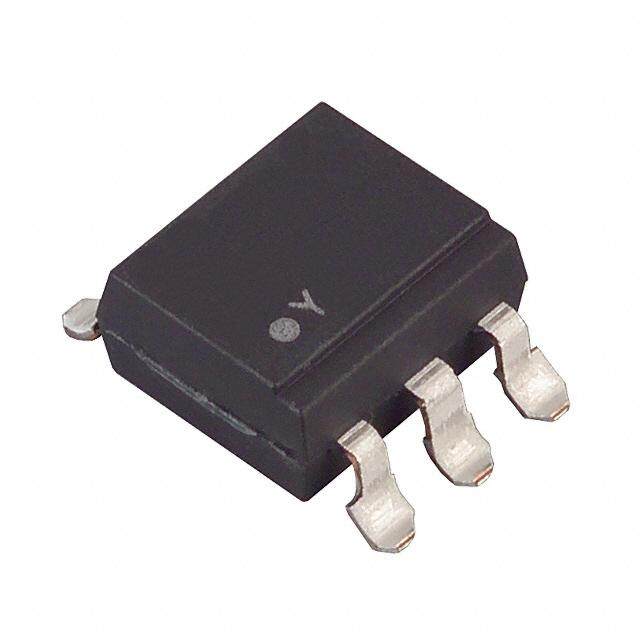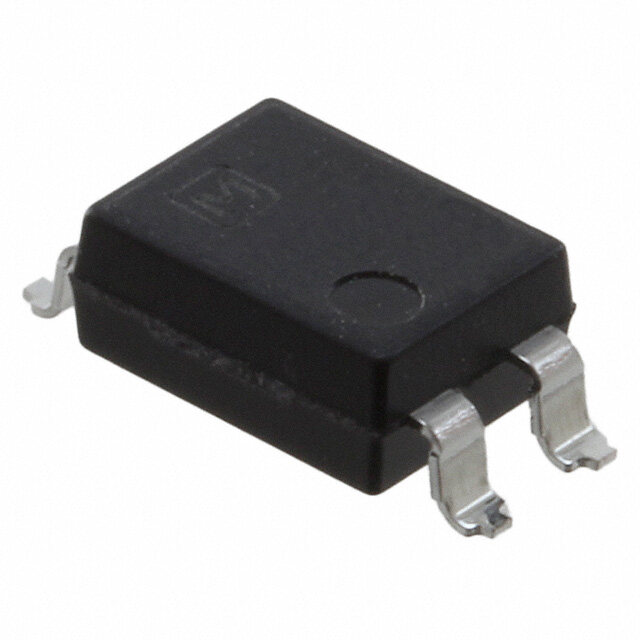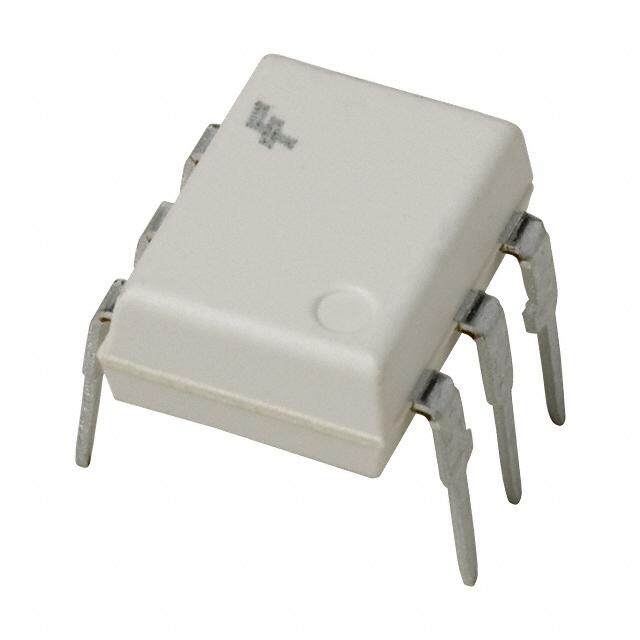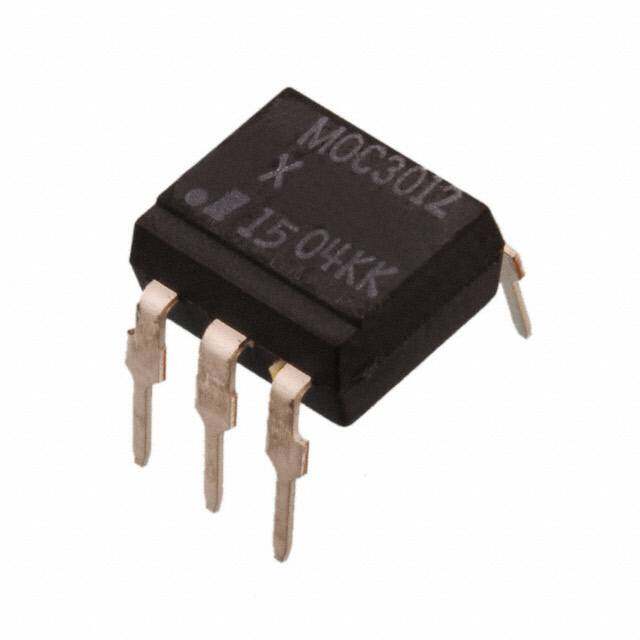ICGOO在线商城 > 隔离器 > 光隔离器 - 三端双向可控硅,SCR输出 > MOC3052TVM
- 型号: MOC3052TVM
- 制造商: Fairchild Semiconductor
- 库位|库存: xxxx|xxxx
- 要求:
| 数量阶梯 | 香港交货 | 国内含税 |
| +xxxx | $xxxx | ¥xxxx |
查看当月历史价格
查看今年历史价格
MOC3052TVM产品简介:
ICGOO电子元器件商城为您提供MOC3052TVM由Fairchild Semiconductor设计生产,在icgoo商城现货销售,并且可以通过原厂、代理商等渠道进行代购。 MOC3052TVM价格参考。Fairchild SemiconductorMOC3052TVM封装/规格:光隔离器 - 三端双向可控硅,SCR输出, Optoisolator Triac Output 4170Vrms 1 Channel 6-DIP。您可以下载MOC3052TVM参考资料、Datasheet数据手册功能说明书,资料中有MOC3052TVM 详细功能的应用电路图电压和使用方法及教程。
MOC3052TVM 是由 ON Semiconductor 生产的光隔离器,属于三端双向可控硅(TRIAC)输出型。该器件结合了光电耦合器和可控硅的优势,能够实现电气隔离和开关控制功能,广泛应用于各种需要高隔离电压和低功耗的场景中。 应用场景: 1. 家用电器控制: - MOC3052TVM 常用于家用电器如空调、洗衣机、微波炉等设备的电源控制电路中。它能够通过光耦合的方式实现主控板与高压交流电源之间的电气隔离,确保安全性和可靠性。例如,在空调的风扇调速或压缩机启动控制中,MOC3052TVM 可以根据主控板发出的信号精确控制负载电流的通断。 2. 智能照明系统: - 在智能照明系统中,MOC3052TVM 被用于调光器和开关控制器。它能够通过调节相位角来控制灯光亮度,同时提供良好的电气隔离,防止高压侧对低压控制电路产生干扰。这种应用常见于LED灯、荧光灯等照明设备的调光控制。 3. 工业自动化控制: - 在工业自动化领域,MOC3052TVM 适用于电机驱动、加热元件控制等场合。它可以将PLC(可编程逻辑控制器)或其他控制单元与执行机构(如继电器、接触器)隔离开来,确保系统的稳定运行。特别是在存在强电磁干扰的环境中,MOC3052TVM 的隔离特性尤为重要。 4. 电力监控与保护: - 电力监控设备如电表、断路器等也常使用MOC3052TVM 来实现信号传输和负载控制。它能够在不影响电网正常工作的情况下,准确地检测并响应过载、短路等异常情况,从而保护电路免受损害。 总之,MOC3052TVM 凭借其优异的电气隔离性能和可靠的开关控制能力,在众多领域得到了广泛应用,尤其是在需要处理高压交流电源且要求高安全性的应用场景中表现尤为突出。
| 参数 | 数值 |
| 产品目录 | |
| 描述 | OPTOCOUPLER TRIAC OUT 600V 6DIP三极与 SCR 输出光电耦合器 6Pin 600V Optocoupl Rand Phs Triac Drvr |
| 产品分类 | |
| 品牌 | Fairchild Semiconductor |
| 产品手册 | |
| 产品图片 |
|
| rohs | 符合RoHS无铅 / 符合限制有害物质指令(RoHS)规范要求 |
| 产品系列 | 光耦合器/光电耦合器,三极与 SCR 输出光电耦合器,Fairchild Semiconductor MOC3052TVM- |
| 数据手册 | |
| 产品型号 | MOC3052TVM |
| 产品目录页面 | |
| 产品种类 | 三极与 SCR 输出光电耦合器 |
| 供应商器件封装 | 6-DIP |
| 关断状态下输出电压-VDRM | 600 V |
| 功率耗散 | 330 mW |
| 包装 | 管件 |
| 单位重量 | 864 mg |
| 商标 | Fairchild Semiconductor |
| 安装类型 | 通孔 |
| 封装 | Bulk |
| 封装/外壳 | 6-DIP(0.400",10.16mm) |
| 封装/箱体 | PDIP-6 |
| 工厂包装数量 | 1000 |
| 最大工作温度 | + 85 C |
| 最大触发电流 | 10 mA |
| 最小工作温度 | - 40 C |
| 标准包装 | 1,000 |
| 正向电压 | 1.15 V |
| 正向电流 | 60 mA |
| 每芯片的通道数量 | 1 Channel |
| 电压-断态 | 600V |
| 电压-正向(Vf)(典型值) | 1.18V |
| 电压-隔离 | 7500Vpk |
| 电流-DC正向(If) | 60mA |
| 电流-保持(Ih) | 220µA (标准) |
| 电流-栅极触发(Igt)(最大值) | 10mA |
| 电流-输出/通道 | - |
| 系列 | MOC3052TM |
| 绝缘电压 | 5250 Vrms |
| 认可 | UR, VDE |
| 输出类型 | AC |
| 输出设备 | PhotoTriac |
| 通道数 | 1 |
| 零交叉电路 | Without Zero-Crossing Circuit |
| 零件号别名 | MOC3052TVM_NL |

.jpg)
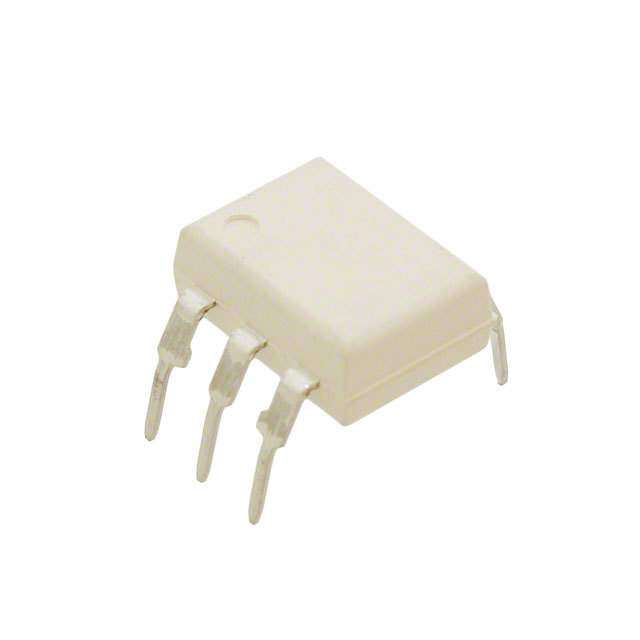
.jpg)

- 商务部:美国ITC正式对集成电路等产品启动337调查
- 曝三星4nm工艺存在良率问题 高通将骁龙8 Gen1或转产台积电
- 太阳诱电将投资9.5亿元在常州建新厂生产MLCC 预计2023年完工
- 英特尔发布欧洲新工厂建设计划 深化IDM 2.0 战略
- 台积电先进制程称霸业界 有大客户加持明年业绩稳了
- 达到5530亿美元!SIA预计今年全球半导体销售额将创下新高
- 英特尔拟将自动驾驶子公司Mobileye上市 估值或超500亿美元
- 三星加码芯片和SET,合并消费电子和移动部门,撤换高东真等 CEO
- 三星电子宣布重大人事变动 还合并消费电子和移动部门
- 海关总署:前11个月进口集成电路产品价值2.52万亿元 增长14.8%
.jpg)
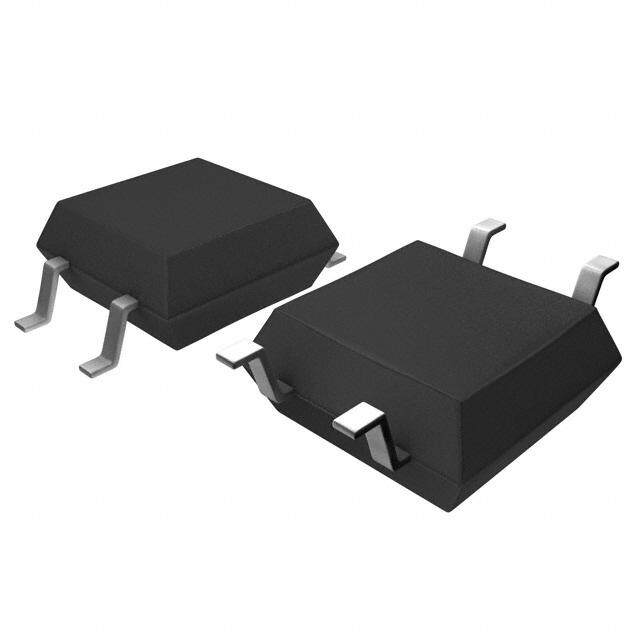
.jpg)
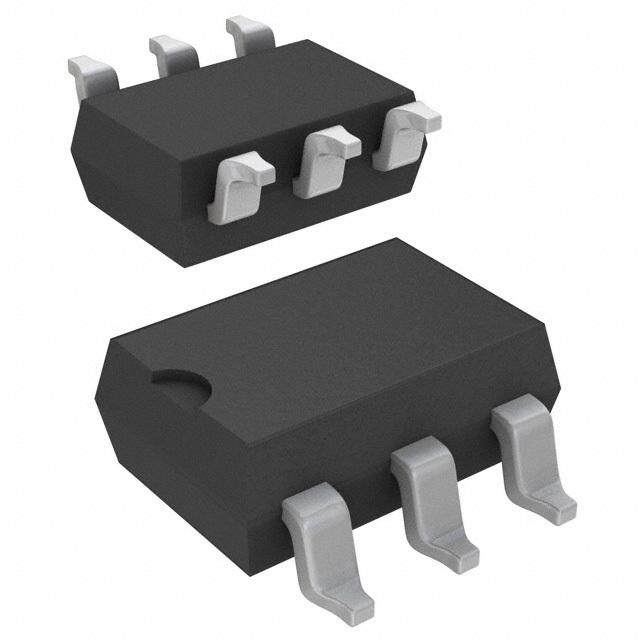
PDF Datasheet 数据手册内容提取
Is Now Part of To learn more about ON Semiconductor, please visit our website at www.onsemi.com Please note: As part of the Fairchild Semiconductor integration, some of the Fairchild orderable part numbers will need to change in order to meet ON Semiconductor’s system requirements. Since the ON Semiconductor product management systems do not have the ability to manage part nomenclature that utilizes an underscore (_), the underscore (_) in the Fairchild part numbers will be changed to a dash (-). This document may contain device numbers with an underscore (_). Please check the ON Semiconductor website to verify the updated device numbers. The most current and up-to-date ordering information can be found at www.onsemi.com. Please email any questions regarding the system integration to Fairchild_questions@onsemi.com. ON Semiconductor and the ON Semiconductor logo are trademarks of Semiconductor Components Industries, LLC dba ON Semiconductor or its subsidiaries in the United States and/or other countries. ON Semiconductor owns the rights to a number of patents, trademarks, copyrights, trade secrets, and other intellectual property. A listing of ON Semiconductor’s product/patent coverage may be accessed at www.onsemi.com/site/pdf/Patent-Marking.pdf. ON Semiconductor reserves the right to make changes without further notice to any products herein. ON Semiconductor makes no warranty, representation or guarantee regarding the suitability of its products for any particular purpose, nor does ON Semiconductor assume any liability arising out of the application or use of any product or circuit, and specifically disclaims any and all liability, including without limitation special, consequential or incidental damages. Buyer is responsible for its products and applications using ON Semiconductor products, including compliance with all laws, regulations and safety requirements or standards, regardless of any support or applications information provided by ON Semiconductor. “Typical” parameters which may be provided in ON Semiconductor data sheets and/or specifications can and do vary in different applications and actual performance may vary over time. All operating parameters, including “Typicals” must be validated for each customer application by customer’s technical experts. ON Semiconductor does not convey any license under its patent rights nor the rights of others. ON Semiconductor products are not designed, intended, or authorized for use as a critical component in life support systems or any FDA Class 3 medical devices or medical devices with a same or similar classification in a foreign jurisdiction or any devices intended for implantation in the human body. Should Buyer purchase or use ON Semiconductor products for any such unintended or unauthorized application, Buyer shall indemnify and hold ON Semiconductor and its officers, employees, subsidiaries, affiliates, and distributors harmless against all claims, costs, damages, and expenses, and reasonable attorney fees arising out of, directly or indirectly, any claim of personal injury or death associated with such unintended or unauthorized use, even if such claim alleges that ON Semiconductor was negligent regarding the design or manufacture of the part. ON Semiconductor is an Equal Opportunity/Affirmative Action Employer. This literature is subject to all applicable copyright laws and is not for resale in any manner.
M O C September 2015 3 0 5 1 M , MOC3051M, MOC3052M M O 6-Pin DIP Random-Phase Triac Driver Optocoupler C 3 0 (600 Volt Peak) 5 2 M — Features Description 6 • Excellent IFT Stability—IR Emitting Diode Has Low The MOC3051M and MOC3052M consist of a GaAs -P Degradation infrared emitting diode optically coupled to a non-zero- in • 600 V Peak Blocking Voltage crossing silicon bilateral AC switch (triac). These devices D • Safety and Regulatory Approvals isolate low voltage logic from 115 VAC and 240 VAC lines IP to provide random phase control of high current triacs or R – UL1577, 4,170 VAC for 1 Minute RMS thyristors. These devices feature greatly enhanced static a – DIN EN/IEC60747-5-5 dv/dt capability to ensure stable switching performance n d of inductive loads. o Applications m - • Solenoid/Valve Controls P h • Lamp Ballasts a s • Static AC Power Switch e • Interfacing Microprocessors to 115 V and 240 V T AC AC r Peripherals ia c • Solid State Relay D • Incandescent Lamp Dimmers r i v • Temperature Controls e r • Motor Controls O p t o c o u p Schematic Package Outlines l e r ( 6 0 0 V o ANODE 1 6 MAIN TERM. lt P e a k ) CATHODE 2 5 NC* N/C 3 4 MAIN TERM. *DO NOT CONNECT Figure 2. Package Outlines (TRIAC SUBSTRATE) Figure 1. Schematic ©2005 Fairchild Semiconductor Corporation www.fairchildsemi.com MOC3051M, MOC3052M Rev. 1.7
M O Safety and Insulation Ratings C 3 As per DIN EN/IEC 60747-5-5, this optocoupler is suitable for “safe electrical insulation” only within the safety limit 0 5 data. Compliance with the safety ratings shall be ensured by means of protective circuits. 1 M Parameter Characteristics , M Installation Classifications per DIN VDE < 150 VRMS I–IV O 0110/1.89 Table 1, For Rated Mains Voltage < 300 V I–IV C RMS 3 Climatic Classification 40/85/21 0 5 2 Pollution Degree (DIN VDE 0110/1.89) 2 M Comparative Tracking Index 175 — 6 - P i Symbol Parameter Value Unit n D Input-to-Output Test Voltage, Method A, VIORM x 1.6 = VPR, 1360 V IP V Type and Sample Test with tm = 10 s, Partial Discharge < 5 pC peak R PR Input-to-Output Test Voltage, Method B, V x 1.875 = V , a IORM PR 1594 V n 100% Production Test with tm = 1 s, Partial Discharge < 5 pC peak d o VIORM Maximum Working Insulation Voltage 850 Vpeak m - VIOTM Highest Allowable Over-Voltage 6000 Vpeak P h External Creepage ≥ 7 mm a s External Clearance ≥ 7 mm e T External Clearance (for Option TV, 0.4" Lead Spacing) ≥ 10 mm r i a DTI Distance Through Insulation (Insulation Thickness) ≥ 0.5 mm c R Insulation Resistance at T , V = 500 V > 109 Ω D IO S IO r i v e r O p t o c o u p l e r ( 6 0 0 V o l t P e a k ) ©2005 Fairchild Semiconductor Corporation www.fairchildsemi.com MOC3051M, MOC3052M Rev. 1.7 2
M O Absolute Maximum Ratings C Stresses exceeding the absolute maximum ratings may damage the device. The device may not function or be 3 0 operable above the recommended operating conditions and stressing the parts to these levels is not recommended. 5 1 In addition, extended exposure to stresses above the recommended operating conditions may affect device reliability. M The absolute maximum ratings are stress ratings only. TA = 25°C unless otherwise specified. , M Symbol Parameters Value Unit O C Total Device 3 0 TSTG Storage Temperature -40 to +150 °C 5 2 T Operating Temperature -40 to +85 °C M OPR T Junction Temperature Range -40 to +100 °C — J T Lead Solder Temperature 260 for 10 seconds °C 6 SOL - P Total Device Power Dissipation at 25°C Ambient 330 mW i P n D Derate Above 25°C 4.4 mW/°C D I Emitter P R IF Continuous Forward Current 60 mA a n VR Reverse Voltage 3 V d o Total Power Dissipation at 25°C Ambient 100 mW m P D - Derate Above 25°C 1.33 mW/°C P h Detector a s V Off-State Output Terminal Voltage 600 V e DRM T ITSM Peak Non-Repetitive Surge Current (Single Cycle 60 Hz Sine Wave) 1 A ri a Total Power Dissipation at 25°C Ambient 300 mW c P D D Derate Above 25°C 4 mW/°C r i v e r O p t o c o u p l e r ( 6 0 0 V o l t P e a k ) ©2005 Fairchild Semiconductor Corporation www.fairchildsemi.com MOC3051M, MOC3052M Rev. 1.7 3
M O Electrical Characteristics C T = 25°C unless otherwise specified. 3 A 0 5 1 Individual Component Characteristics M , M Symbol Parameters Test Conditions Min. Typ. Max. Unit O EMITTER C 3 V Input Forward Voltage I = 10 mA 1.18 1.50 V 0 F F 5 2 IR Reverse Leakage Current VR = 3 V 0.05 100 µA M DETECTOR — IDRM Peak Blocking Current, Either Direction VDRM = 600 V, IF = 0(1) 10 100 nA 6 - P V Peak On-State Voltage, Either Direction I = 100 mA peak, I = 0 1.7 2.5 V TM TM F i n dv/dt Critical Rate of Rise of Off-State Voltage I = 0 (Figure 13, at 400V) 1000 V/µs F D I P R Transfer Characteristics a n d Symbol DC Characteristics Test Conditions Device Min. Typ. Max. Unit o m LED Trigger Current, Main Terminal MOC3051M 15 IFT Either Direction Voltage = 3 V(2) MOC3052M 10 mA -Ph a Holding Current, s IH Either Direction All 220 µA e T r i a c Isolation Characteristics D r Symbol Characteristic Test Conditions Min. Typ. Max. Unit i v e VISO Input-Output Isolation Voltage(3) f = 60 Hz, t = 1 Minute 4170 VACRMS r O R Isolation Resistance V = 500 V 1011 Ω ISO I-O DC p t C Isolation Capacitance V = 0 V, f = 1 MHz 0.2 pF o ISO c o u Notes: p l 1. Test voltage must be applied within dv/dt rating. e r 2. All devices are guaranteed to trigger at an IF value less than or equal to max IFT. Therefore, the recommended (6 operating I lies between maximum I (15 mA for MOC3051M, 10 mA for MOC3052M) and absolute maximum 0 F F 0 IF (60 mA). V 3. Isolation voltage, V , is an internal device dielectric breakdown rating. For this test, pins 1 and 2 are common, and o ISO l t pins 4, 5 and 6 are common. P e a k ) ©2005 Fairchild Semiconductor Corporation www.fairchildsemi.com MOC3051M, MOC3052M Rev. 1.7 4
M O Typical Performance Curves C 3 0 1.7 5 600 1 M 1.6 , 400 M )V( E 1.5 )Am OC GA 1.4 ( T 200 3 TLOV DRAW 1.3 TA = -40°C NERRUC E 0 052M ROF V- F 11..12 TA = 25°CTA = 85°C TATS-NO - -200 — 6-P IM -400 in 1.0 D I P 0.9 -600 1 10 100 -3 -2 -1 0 1 2 3 R I - LED FORWARD CURRENT (mA) V - ON-STATE VOLTAGE (V) a F TM n Figure 3. LED Forward Voltage vs. Forward Current Figure 4. On-State Characteristics d o m )DEZILA 1.4 NORMALIZED TO TA = 25°C URRENT 15 NPWORINM >A L1I0Z0E Dμs TO: -Pha MRON 1.2 GER C 10 se ( TNER 1.0 D TRIG Tria RUCR EGG 0.8 MALIZED LE 5 c Driv IRT - ITF 0.6-40 -20 0 20 40 60 80 100 I - NORFT 01 10 100 er Op TA - AMBIENT TEMPERATURE (°C) PWIN - LED TRIGGER PULSE WIDTH (μs) to c Figure 5. Trigger Current vs. Ambient Temperature Figure 6. LED Current Required to Trigger vs. LED Pulse Width o u p l I vs. Temperature (normalized) cross detector. The same task can be accomplished by a e F r microprocessor which is synchronized to the AC zero ( Figure 5 shows the increase of the trigger current when 6 crossing. The phase controlled trigger current may be a 0 the device is expected to operate at an ambient temper- very short pulse which saves energy delivered to the 0 ature below 25°C. Multiply the normalized IFT shown on input LED. LED trigger pulse currents shorter than V o this graph with the data sheet guaranteed I . FT 100µs must have an increased amplitude as shown on l t Example: Figure 6. This graph shows the dependency of the trig- P e TA = 25°C, IFT = 10 mA ger current IFT versus the pulse width can be seen on the a I at -40°C = 10 mA x 1.1 = 11 mA chart delay t(d) versus the LED trigger current. k FT ) I in the graph I versus (PW) is normalized in respect FT FT Phase Control Considerations to the minimum specified IFT for static condition, which is specified in the device characteristic. The normalized I FT LED Trigger Current versus PW (normalized) has to be multiplied with the devices guaranteed static Random Phase Triac drivers are designed to be phase trigger current. controllable. They may be triggered at any phase angle Example: within the AC sine wave. Phase control may be accom- Guaranteed I = 10 mA, Trigger pulse width PW = 3 µs FT plished by an AC line zero cross detector and a variable I (pulsed) = 10 mA x 5 = 50 mA FT pulse delay generator which is synchronized to the zero ©2005 Fairchild Semiconductor Corporation www.fairchildsemi.com MOC3051M, MOC3052M Rev. 1.7 5
M O Minimum LED Off Time in Phase Control triggering of the device in the event of fast raising line C Applications voltage transients. Inductive loads generate a commutat- 3 0 ing dv/dt that may activate the triac drivers noise sup- 5 In Phase control applications one intends to be able to pression circuits. This prevents the device from turning 1 control each AC sine half wave from 0° to 180°. Turn on M on at its specified trigger current. It will in this case go , at 0° means full power and turn on at 180° means zero into the mode of “half waving” of the load. Half waving of M power. This is not quite possible in reality because triac the load may destroy the power triac and the load. O driver and triac have a fixed turn on time when activated C at zero degrees. At a phase control angle close to 180° Figure 10 shows the dependency of the triac drivers IFT 3 versus the reapplied voltage rise with a Vp of 400V. This 0 the driver’s turn on pulse at the trailing edge of the AC 5 dv/dt condition simulates a worst case commutating dv/ 2 sine wave must be limited to end 200 µs before AC zero M dt amplitude. cross as shown in Figure 7. This assures that the triac — driver has time to switch off. Shorter times may cause It can be seen that the I does not change until a FT loss of control at the following half cycle. commutating dv/dt reaches 1000V/µs. The data sheet 6 - P IFT versus dv/dt specified IFT is therefore applicable for all practical in inductive loads and load factors. Triac drivers with good noise immunity (dv/dt static) have D I internal noise rejection circuits which prevent false P R a n d o m 1.0 - P AC Sine )A 0.9 h 0° 180° m( T 0.8 as NE 0.7 e RR 0.6 T U r C G 0.5 iac LED PW NID 0.4 D LED Current LO 0.3 r H - H 0.2 ive LED turn off min. 200μs I 0.1 r O 0 p -40 -30 -20-10 0 10 20 30 40 50 60 70 80 Figure 7. MiCnirmosusm o Tf iAmCe Tforar iLliEngD ETdugrne Off to Zero TA - AMBIENT TEMPERATURE (oC) toc o Figure8. Holding Current, IH vs. Temperature u p l 1000 e r ( 6 0 0 )A V n( TN 100 ZED) 1.5 olt ERRUC E 10 NORMALI 11..43 NORMIFATL IaZtE 3D V TO: Peak GA T ( 1.2 ) KA EN 1.1 E R L R 1 -I MRD 1 GER CU 00..98 G RI 0.7 T D 0.6 E 0.1-40 -20 0 20 40 60 80 100 - LT 0.05.001 0.01 0.1 1 10 100 1000 10000 F TA- AMBIENT TEMPERATURE (o C) I dv/dt (V/μs) Figure 9. Leakage Current, IDRM vs. Temperature Figure10. LED Trigger Current, IFT vs. dv/dt ©2005 Fairchild Semiconductor Corporation www.fairchildsemi.com MOC3051M, MOC3052M Rev. 1.7 6
M O t(delay), t(f) versus I FT C 3 The triac driver’s turn on switching speed consists of a 1. The mercury wetted relay provides a high speed 0 5 turn on delay time t(d) and a fall time t(f). Figure 12 repeated pulse to the D.U.T. 1 shows that the delay time depends on the LED trigger 2. 100x scope probes are used, to allow high speeds and M current, while the actual trigger transition time t(f) stays voltages. , M constant with about one micro second. 3. The worst-case condition for static dv/dt is established O C The delay time is important in very short pulsed opera- by triggering the D.U.T. with a normal LED input 3 tion because it demands a higher trigger current at very current, then removing the current. The variable R 0 TEST 5 short trigger pulses. This dependency is shown in the allows the dv/dt to be gradually increased until the 2 graph IFT vs. LED PW. D.U.T. continues to trigger in response to the applied M voltage pulse, even after the LED current has been — The turn on transition time t(f) combined with the power triac’s turn on time is important to the power dissipation removed. The dv/dt is then decreased until the D.U.T. 6 stops triggering. τ is measured at this point and - of this device. RC P recorded. i n SCOPE D I IFT ZERO CROSS 115 VAC P DETECTOR R VTM a EXT. SYNC n PHASE CTRL. t(d)t(f) GFEUNNECRTAITOONR PPWER CIOTDR LC.TRL. dom Vout Vo AMPL. CTRL. - P ISOL. TRANSF. VTM IFT h 10 kΩ DUT a s AC e 100 Ω T r i a c Figure 11. Switching Time Test Circuit D r i v e r +400 10 Vdc RTEST Op R = 1 kΩ t o ∝s) PULSE co all) ( INPUT MWEERTCTUERDY CTEST X100 up ND t(f 1 td RELAY D.U.T. SPCROOPBEE ler A ( ay) tf 60 el 0 d t( V Vmax = 400 V o APPLIED VOLTAGE l WAVEFORM 252 V t P 0.1 e 10 20 30 40 50 60 0 VOLTS dv/dt = 0τ.R6C3 V= τ2R5C2 ak IFT - LED TRIGGER CURRENT (mA) τRC ) Figure 12. Delay Time, t(d), and Fall Time, t(f), Figure 13. Static dv/dt Test Circuit vs. LED Trigger Current ©2005 Fairchild Semiconductor Corporation www.fairchildsemi.com MOC3051M, MOC3052M Rev. 1.7 7
M O Applications Guide C 3 Basic Triac Driver Circuit Triac Driver Circuit for Noisy Environments 0 5 The new random phase triac driver family MOC3052M When the transient rate of rise and amplitude are 1 M and MOC3051M are very immune to static dv/dt which expected to exceed the power triacs and triac drivers , allows snubberless operations in all applications where maximum ratings a snubber circuit as shown in M external generated noise in the AC line is below its guar- Figure15 is recommended. Fast transients are slowed O C anteed dv/dt withstand capability. For these applications by the R-C snubber and excessive amplitudes are 3 a snubber circuit is not necessary when a noise insensi- clipped by the Metal Oxide Varistor MOV. 0 5 tive power triac is used. Figure 14 shows the circuit Triac Driver Circuit for Extremely Noisy 2 diagram. The triac driver is directly connected to the triac M main terminal 2 and a series Resistor R which limits the Environments — current to the triac driver. Current limiting resistor R must As specified in the noise standards IEEE472 and 6 have a minimum value which restricts the current into the IEC255-4. - P driver to maximum 1 A. Industrial control applications do specify a maximum in R = Vp AC / I max rep. = Vp AC / 1 A transient noise dv/dt and peak voltage which is super- D TM imposed onto the AC line voltage. In order to pass this IP The power dissipation of this current limiting resistor and environment noise test a modified snubber network as R the triac driver is very small because the power triac shown in Figure 16 is recommended. a carries the load current as soon as the current through n driver and current limiting resistor reaches the trigger d o current of the power triac. The switching transition times m for the driver is only one micro second and for power - P triacs typical four micro seconds. h a s e T VCC RLED TRIAC DRIVER POWER TRIAC r i a VCC RLED TRIAC DRIVER POWER TRIAC RS c D R MOV AC LINE r AC LINE CONTROL CS iv R e r CONTROL Q LOAD RET. LOAD O Typical Snubber values RS = 33 Ω, CS = 0.01 μF p t RET. RLED = (VCC - VF LED - Vsat Q)/IFT MOV (Metal Oxide Varistor) protects triac and o R = Vp AC line/ITSM driver from transient overvoltages >VDRM max. c o u Figure 14. Basic Driver Circuit Figure 15. Triac Driver Circuit for Noisy Environments p l e r ( 6 0 0 V POWER TRIAC o l t VCC RLED TRIAC DRIVER R P RS e a MOV AC LINE k ) CS CONTROL LOAD RET. Recommended snubber to pass IEEE472 and IEC255-4 noise tests RS = 47 Ω, CS = 0.01 μF Figure 16. Triac Driver Circuit for Extremely Noisy Environments ©2005 Fairchild Semiconductor Corporation www.fairchildsemi.com MOC3051M, MOC3052M Rev. 1.7 8
M O Reflow Profile C 3 0 Max. Ramp-up Rate = 3°C/S 5 TP Max. Ramp-down Rate = 6°C/S 1 260 M 240 tP , M TL 220 O 200 Tsmax C ) 180 Preheat Area tL 30 C 5 ° 160 2 ( Tsmin M ure 140 ts — at 120 6 er 100 -P p m 80 in e 60 D T I 40 P R 20 a 0 n d 120 240 360 o m Time 25°C to Peak - P Time (seconds) h a s e T Profile Freature Pb-Free Assembly Profile r i a Temperature Minimum (Tsmin) 150°C c D Temperature Maximum (Tsmax) 200°C r i v Time (tS) from (Tsmin to Tsmax) 60 seconds to 120 seconds e r Ramp-up Rate (T to T ) 3°C/second maximum O L P p Liquidous Temperature (TL) 217°C to Time (t ) Maintained Above (T ) 60 seconds to 150 seconds c L L o Peak Body Package Temperature 260°C +0°C / –5°C u p Time (t ) within 5°C of 260°C 30 seconds le P r Ramp-down Rate (T to T ) 6°C/second maximum ( P L 6 0 Time 25°C to Peak Temperature 8 minutes maximum 0 V o l Figure 17. Reflow Profile t P e a k ) ©2005 Fairchild Semiconductor Corporation www.fairchildsemi.com MOC3051M, MOC3052M Rev. 1.7 9
M O Ordering Information(4) C 3 0 Part Number Package Packing Method 5 1 M MOC3051M DIP 6-Pin Tube (50 Units) , MOC3051SM SMT 6-Pin (Lead Bend) Tube (50 Units) M O MOC3051SR2M SMT 6-Pin (Lead Bend) Tape and Reel (1000 Units) C 3 MOC3051VM DIP 6-Pin, DIN EN/IEC60747-5-5 Option Tube (50 Units) 0 5 MOC3051SVM SMT 6-Pin (Lead Bend), DIN EN/IEC60747-5-5 Option Tube (50 Units) 2 M MOC3051SR2VM SMT 6-Pin (Lead Bend), DIN EN/IEC60747-5-5 Option Tape and Reel (1000 Units) — MOC3051TVM DIP 6-Pin, 0.4” Lead Spacing, DIN EN/IEC60747-5-5 Option Tube (50 Units) 6 - Note: P i 4. The product orderable part number system listed in this table also applies to the MOC3052M product families. n D I P Marking Information R a n d o m 1 - P h MOC3051 2 a s e V X YY Q 6 Tr ia c D r 3 4 5 iv e r Figure 18. Top Mark O p t o c Top Mark Definitions o u 1 Fairchild Logo p l e 2 Device Number r ( DIN EN/IEC60747-5-5 Option (only appears on component 6 3 0 ordered with this option) 0 V 4 One-Digit Year Code, e.g., ‘5’ o l 5 Two-Digit Work Week, Ranging from ‘01’ to ‘53’ t P 6 Assembly Package Code e a k ) ©2005 Fairchild Semiconductor Corporation www.fairchildsemi.com MOC3051M, MOC3052M Rev. 1.7 10
None
None
None
ON Semiconductor and are trademarks of Semiconductor Components Industries, LLC dba ON Semiconductor or its subsidiaries in the United States and/or other countries. ON Semiconductor owns the rights to a number of patents, trademarks, copyrights, trade secrets, and other intellectual property. A listing of ON Semiconductor’s product/patent coverage may be accessed at www.onsemi.com/site/pdf/Patent−Marking.pdf. ON Semiconductor reserves the right to make changes without further notice to any products herein. ON Semiconductor makes no warranty, representation or guarantee regarding the suitability of its products for any particular purpose, nor does ON Semiconductor assume any liability arising out of the application or use of any product or circuit, and specifically disclaims any and all liability, including without limitation special, consequential or incidental damages. Buyer is responsible for its products and applications using ON Semiconductor products, including compliance with all laws, regulations and safety requirements or standards, regardless of any support or applications information provided by ON Semiconductor. “Typical” parameters which may be provided in ON Semiconductor data sheets and/or specifications can and do vary in different applications and actual performance may vary over time. All operating parameters, including “Typicals” must be validated for each customer application by customer’s technical experts. ON Semiconductor does not convey any license under its patent rights nor the rights of others. ON Semiconductor products are not designed, intended, or authorized for use as a critical component in life support systems or any FDA Class 3 medical devices or medical devices with a same or similar classification in a foreign jurisdiction or any devices intended for implantation in the human body. Should Buyer purchase or use ON Semiconductor products for any such unintended or unauthorized application, Buyer shall indemnify and hold ON Semiconductor and its officers, employees, subsidiaries, affiliates, and distributors harmless against all claims, costs, damages, and expenses, and reasonable attorney fees arising out of, directly or indirectly, any claim of personal injury or death associated with such unintended or unauthorized use, even if such claim alleges that ON Semiconductor was negligent regarding the design or manufacture of the part. ON Semiconductor is an Equal Opportunity/Affirmative Action Employer. This literature is subject to all applicable copyright laws and is not for resale in any manner. PUBLICATION ORDERING INFORMATION LITERATURE FULFILLMENT: N. American Technical Support: 800−282−9855 Toll Free ON Semiconductor Website: www.onsemi.com Literature Distribution Center for ON Semiconductor USA/Canada 19521 E. 32nd Pkwy, Aurora, Colorado 80011 USA Europe, Middle East and Africa Technical Support: Order Literature: http://www.onsemi.com/orderlit Phone: 303−675−2175 or 800−344−3860 Toll Free USA/Canada Phone: 421 33 790 2910 Fax: 303−675−2176 or 800−344−3867 Toll Free USA/Canada Japan Customer Focus Center For additional information, please contact your local Email: orderlit@onsemi.com Phone: 81−3−5817−1050 Sales Representative © Semiconductor Components Industries, LLC www.onsemi.com www.onsemi.com 1
Mouser Electronics Authorized Distributor Click to View Pricing, Inventory, Delivery & Lifecycle Information: O N Semiconductor: MOC3052M MOC3052SM MOC3052TVM MOC3052SR2VM MOC3052VM MOC3052SVM MOC3052SR2M
 Datasheet下载
Datasheet下载
